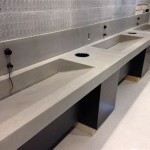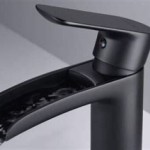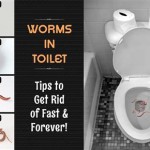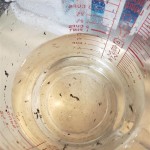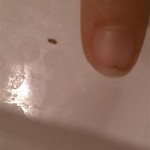Very Tiny Bugs in Bathroom Sink
Finding tiny bugs in your bathroom sink can be a disconcerting experience. It's natural to wonder where these creatures came from, what they are, and if they pose any threat. While most of these tiny bugs are harmless, they can be a nuisance and indicate potential issues in your bathroom. This article will shed light on the common culprits behind these unwelcome guests, their life cycle, and the ways to prevent their reappearance.
Common Culprits
The most common culprits for tiny bugs in your bathroom sink are:
-
Drain Flies:
These small, black flies with fuzzy bodies are often called "fruit flies" due to their attraction to decaying organic matter. They are attracted to the moisture and food sources found in drains, particularly in poorly maintained bathroom sinks. -
Springtails:
These minute, jumping insects are typically white or grey and have a forked tail that helps them propel themselves. Springtails thrive in damp environments and are often found in bathroom sinks due to their attraction to moisture and decaying organic matter. -
Mites:
These very small creatures are commonly found in bathrooms, where they feed on decaying organic matter, dust mites, and even human skin cells. They are often mistaken for dust particles or tiny spiders, but they lack the distinct eight legs characteristic of spiders.
Other less common but possible culprits include:
-
Mosquitoes:
These biting insects can breed in stagnant water and enter homes through open windows or doors. While they are typically associated with outdoor areas, they can find their way into bathrooms and lay their eggs in standing water in sinks. -
Silverfish:
These small, silver-colored insects are attracted to damp environments and feed on organic materials, including paper products and textiles. They are often found in bathrooms due to the presence of moisture, but they can also find their way into sinks.
Life Cycle and Habitat
The life cycle of these tiny bugs varies depending on the species, but they typically involve an egg stage, larval stage, and adult stage. Drain flies, for instance, lay their eggs in moist, decaying organic matter, like food scraps or hair, found in drains. These eggs hatch into larvae, which feed on the same substrate and eventually develop into adult flies. Springtails, on the other hand, lay their eggs in moist environments and the young resemble smaller versions of the adults. This pattern of laying eggs, hatching, and growing into adults repeats continuously, leading to a rapid population growth.
The bathroom sink provides an ideal habitat for these tiny bugs due to its access to moisture, food, and suitable breeding sites. The sink's pipes and drains offer a sheltered environment for them to lay eggs and develop, while the presence of decaying food debris, hair, soap scum, and other organic matter serves as a food source. This continuous cycle of breeding and feeding can create a persistent infestation if not addressed.
Preventing the Bugs
Preventing tiny bugs in your bathroom sink starts with good hygiene practices and regular maintenance. Here are some effective steps to deter these unwelcome guests:
-
Keep your bathroom clean and dry:
Wipe down the sink and surrounding surfaces regularly to remove food debris, hair, and other organic matter that these insects feed on. Ensure proper ventilation to prevent moisture buildup. -
Clean your drains regularly:
Use a baking soda and vinegar mixture or a commercial drain cleaner to remove accumulated debris and grease from your sink drains. This will eliminate potential breeding grounds for these pests. -
Repair any leaks promptly:
Leaky faucets and pipes create damp environments that attract these bugs. Addressing leaks promptly can help prevent the buildup of moisture and encourage their presence. -
Seal any cracks or openings:
Inspect your bathroom for cracks or openings in the walls, floors, and pipes that these bugs could use to enter. Seal any gaps with caulk or sealant to prevent their access. -
Avoid leaving standing water:
Empty the sink and tub after each use to prevent stagnant water that attracts mosquitoes and other insects. -
Use insect traps:
Place insect traps specifically designed for drain flies, springtails, or other common bathroom pests to capture and eliminate existing infestations.
By following these preventative measures, you can effectively discourage these pesky bugs from inhabiting your bathroom sink and maintain a clean, hygienic environment.

What Are These Tiny Brown Crawling Bugs In My Bathroom Apartment Lease Phoenix Area Arizona Az City Data Forum

Bathroom Bugs Identification Guide How To Get Rid Of Each Type A Z Animals

Common Bathroom Bugs How To Get Rid Of Them Florida Pest Control

What Bugs Can Live In Your Drains Terminix

Insect And Spider Identification Very Tiny 6 Leg Bugs In Bathroom Or Sink Please Help 1 By Shaun8

Identify Tiny Bugs In Bathroom And Get Rid Of Them For Good

Bathroom Bugs Identification 15 You Ll See In A

Tiny Bugs That Jump When You Try To Kill Them May Be Springtails What S Bug

5 Common Bathroom Pests You Can Spot Fantastic Services

Bathroom Bugs Identification 15 You Ll See In A
Related Posts
